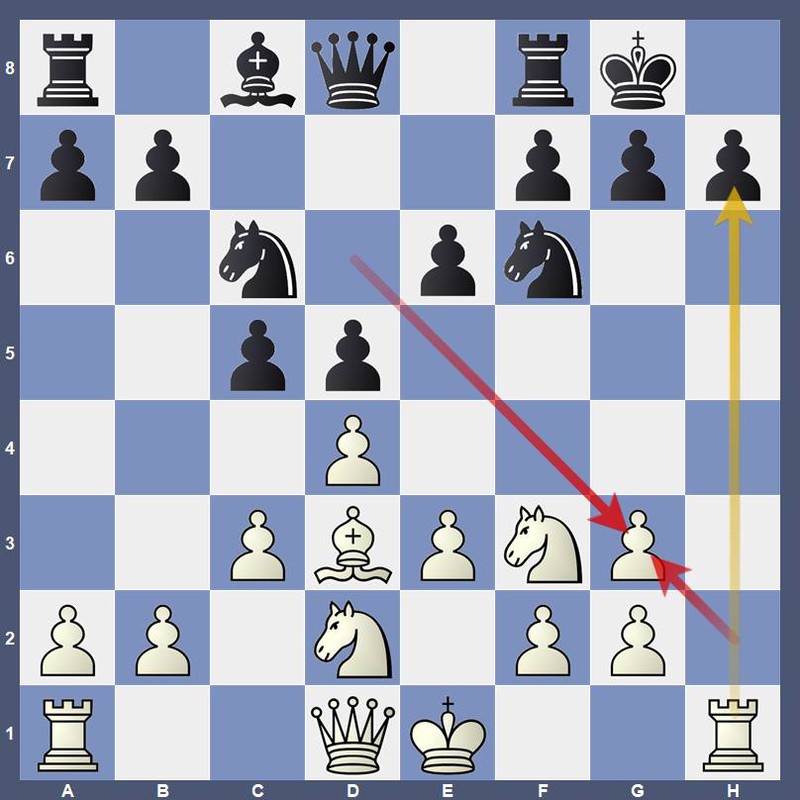
An Introduction To Evaluating Exchanges
How making 'equal' trades could be costing you pointsIntroduction
A common mistake you’ll see your opponents make is exchanging a pawn for a pawn or a piece for a piece without thinking about who benefits from such an exchange.
If you have the patience to consider whether the exchange will benefit you or the opponent, you will have new options.
A Practical Example
For instance, you may keep the tension between the pieces, realising that if the opponent blinks first in the Mexican standoff (and initiates the exchange of pieces), we improve one of our pieces, or our pawn structure, with the recapture. The Bg3 Bxg3 hxg3 idea in London is a good example:

As you can see from the arrows, White's position has considerably improved after 7...Bd6xg3 8.h2xg3:
- Our rook has a half-open h-file, setting up a potential kingside attack against Black's king;
- Our pawn structure has improved as our h-pawn moved closer to the centre, but our pawns remain in one pawn island;
- Our remaining d3-bishop works harmoniously with our pawn structure (mostly on dark squares), while the remaining Black bishop on c8 is stuck behind its d5-e6-f7 pawn chain.
The question you should ask yourself before making an exchange is, 'Who benefits from this exchange?'
Next Steps
Would you like to improve your understanding of exchanging pieces (and middlegame planning in general)?
In a couple of hours, at 12pm-1pm Sydney (GMT+10) time (on Thursdays), I will be doing a LIVE training session in my free Facebook group, 'Adult Chess Improvers'.
Today's training topic is 'How To Effectively Develop A Middlegame Plan', and you can register for it here.(At the time of writing, 18 people have said they are going).
For those of you who stay until the end, I will share an opportunity that, if you enjoyed this post and the live training, you'll absolutely love.
See you on the inside!
More blog posts by Craze

From Stuck At 2200 For 2 Years, To FIDE Master In Just 3 Tournaments
My Journey To Finally Breaking The 2200s Plateau
Converting A Massive Advantage (and why it's so hard)
Enjoy explained examples from Round 1 of the 2024 Sharjah Masters!
Converting An Advantage Into A Win
Discover the 4 main things that stop players converting their winning position into a win!